SEED Grants 2018
Using Hyperspectral Spectroradiometry to Estimate Nitrogen Removal in Wetlands
| Stephen Baines SBU, Ecology and Evolution Shawn Serbin BNL, Environmental and Climate Sciences |
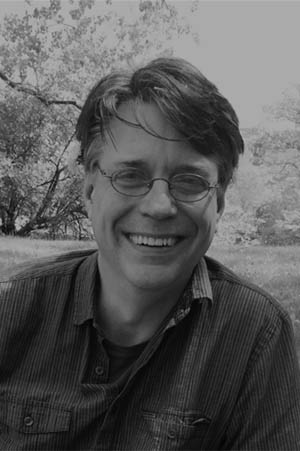 Stephen Baines |
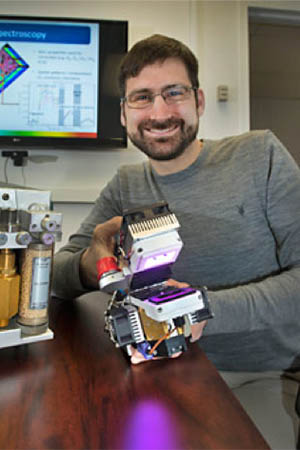 Shawn Serbin |
Wetlands provide a critical service to society by removing nitrogen pollution from surface and ground waters, thereby reducing the chances of harmful algal blooms, fin and shell-fish die-offs and destruction of habitats that acts as nurseries for key living resources. The key processes are hard to measure and therefore difficult to estimate on a landscape scale, making it hard to assess the value of these ecosystems. We will use easily observable above-ground plant traits to “scale up” to regional estimates of nitrogen removal from local measurements. Microbial denitrification, which converts bioavailable nitrate to inert nitrogen gas, is enhanced when plants promote cycles of oxygenation and de-oxygenation of associated soils. Therefore, traits related nitrate concentrations in soils, production of O2 via photosynthesis, delivery of that O2 to sediments, and use of O2 by microbial respiration are all related to microbial denitrification. We will first refine these relationships by collecting data on above and belowground plants traits, soil characteristics and denitrification along transects in three wetlands. We will then use high resolution reflectance spectrometry to infer various important plant traits, such as leaf nitrogen, water stress, and plant biomass. These measurements will be conducted at the plant level, at the canopy level using drone mounted sensors, and finally using airborne sensors provided by NASA. The spectral measurements will be related to denitrification via plants traits using established statistical methods. This data will provide the proof of concept needed to apply for NSF, NASA and DOE funding to establish clear mechanistic links that will enable regional projection of nitrogen removal by wetlands for different land-use, climate or sea level scenarios.
Data-Driven Distribution Grid Stability Analysis and Design with High Renewable Penetration
| Yue Zhao SBU, Electrical and Computer Engineering Alessandra Colli BNL, Sustainable Energy Technologies |
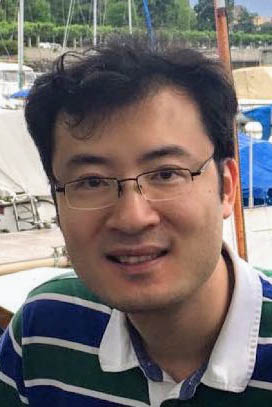 Yue Zhao |
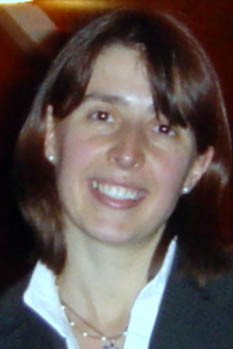 Alessandra Colli |
There has been a continuing surge in distributed renewable energies in power distribution systems, notably evidenced in the proliferation of rooftop solar panels. While clean and increasingly economically viable, the highly intermittent nature of renewable energies has brought significant challenges to the reliable service of power utilities. To maintain voltage and frequency stabilities, conventional capacitor banks, typically switched a few times a day, are no longer sufficient, as reactive power must be supplied in a much more agile fashion. Instead, we will capitalize on the power electronics that accompany the solar panels, and develop distributed and communication-free inverter control algorithms to greatly increase the hosting capacity of solar power in distribution grids with much enhanced grid stability. As such, this project will contribute to the convergence of reliability, economic efficiency, and environmental sustainability in integrating clean power into our power grids, and offer novel and sound technical solutions in achieving the ambitious goal of 50% renewables by 2030 in the state of New York.
This project will leverage the massive data set collected at a very fine temporal level (every second) from the solar panel arrays at BNL’s Northeast Solar Energy Research Center (NSERC). Machine learning based methods will be developed in both analyzing grid stability and designing control algorithms with massive integration of distributed renewable energies. Models will be learned for predicting instabilities as solar power outputs fluctuate in wide areas. Control-friendly models will be learned and employed for designing fast and adaptive smart inverter control algorithms for maintaining grid stability.
Enabling the Efficient Radiation Sources of the Future Through Investigation of Plasma Instabilities
| Navid Vafaei-Najafabadi SBU, Physics and Astronomy Mikhail Polyanskiy BNL, Accelerator Test Facility |
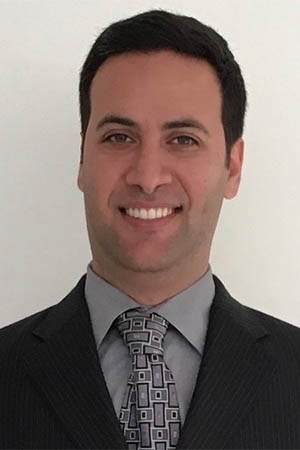 Navid Vafaei-Najafabadi |
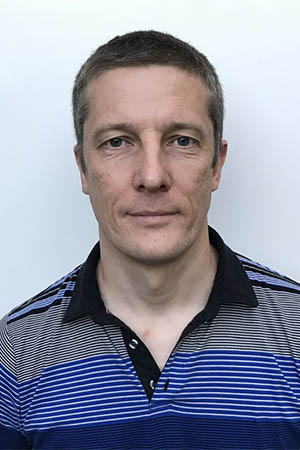 Mikhail Polyanskiy |
Laser-driven plasma-based accelerators can generate high-energy particle beams and gamma-ray radiation in a distance that is hundreds of times shorter than the current, state of the art machines. These plasma accelerators are powered by laser pulses such as those generated by the CO2 laser at the Brookhaven National Laboratory’s (BNL) Accelerator Test Facility (ATF). However, current laser and plasma configurations introduce complex instabilities that lead to the disruption of the laser’s peak, i.e. central and higher power, region. Without mitigating these instabilities, whose origin and characteristics are currently unknown, a very significant fraction of the laser energy is lost rather than being converted to electron or radiation energy, greatly reducing the efficiency of these devices. Here, we propose to use Particle-in-Cell (PIC) simulations as well as experiments at ATF to determine the conditions leading to this laser disruption as well as the time scale and the precise location of this disruption. The central hypothesis of this work is that the growth of instabilities seeded by the rising edge (i.e. front) of the laser interacting with the plasma triggers the laser disruption. Understanding the underlying physics and characteristics of this effect will in turn enable us to find methods for mitigating this effect, which can result in significant increase in the efficiency of future accelerator and radiation sources, the latter being central to the mission of both BNL ATF and the Stony Brook University’s Center for Accelerator Science and Education (CASE). The dual prospect of fundamental physics discovery and application-driven research on the next-generation accelerator and radiation technology is expected to garner strong support from both NSF and the DOE.
Characterizing Sub-Cellular Morphology across Cancer Types
| Tahsin Kurc SBU, Biomedical Informatics Yuewei Lin BNL, Computational Science Initiative |
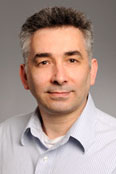 Tahsin Kurc |
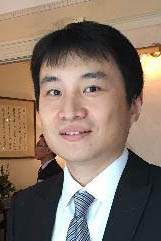 Yuewei Lin |
Disease onset and progression manifests itself as changes in the morphology of tissue. Whole slide tissue imaging, which captures high resolution digital scans of tissue slides, has enabled quantitative studies of these changes at the sub-cellular scale. As the capacity to rapidly generate large quantities of whole slide tissue image data is more widely deployed, there is an increasing need for reliable and efficient (semi-)automated computer methods to complement the traditional manual examination of tissue. In this work, SBU and BNL are partnering to study nuclear morphology across multiple cancer sites, initially focus on Lung, Breast, Pancreatic, and Brain cancers. This study will examine similarities and differences in the structure and distribution of nuclei across cancer sites and how they correlate with clinical outcome data. A better quantification of these patterns can lead to a better understanding of disease mechanisms and more effective diagnostic and treatment methods. Computerized detection and segmentation of nuclear structure is one of the core operations in this type of study, but it also is a challenging process because of heterogeneity in structure and texture characteristics across whole slide tissue specimens. The project will research and develop deep learning-based analysis pipelines for efficient and reliable segmentation of images obtained from Hematoxylin and Eosin (H&E) stained whole slide tissue samples, building on and extending the work done by the SBU and BNL teams in digital pathology and image analysis.
Quantum Phase Coherent Phenomena in Sub-10nm Nanostructures
| Xu Du SBU, Physics and Astronomy Fernando Camino BNL, Center for Functional Nanomaterials |
 Xu Du |
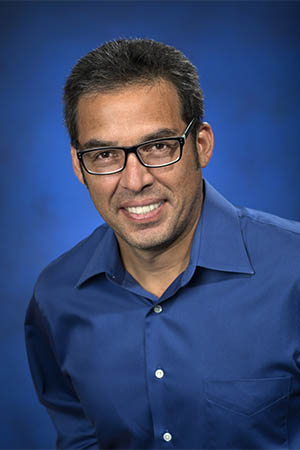 Fernando Camino |
Phase coherence, originated from the wave nature of matter, is a signature of quantum systems. In conventional modern electronics, the wave nature of electrons mainly plays a role at the crystal lattice/tight-binding level, determining the quasiparticle dispersion and effective mass in electronic materials such as semiconductors. On the other hand, electronic devices themselves (e.g., field effect transistors) operate classically where charges are treated as particles. More recently, increasing efforts have been invested in utilizing the quantum mechanical/wave-like nature of electrons for new paradigm electronics. Despite the great promises, a major challenge towards realizing quantum electronics is to overcome decoherence (or “dephasing”) which destructs interference effects of wave functions. With the proposed work, we will study quantum phase coherent transport in nanostructures fabricated on 2D materials and 2D electron gas by pushing the geometric size of such nanostructures to an unprecedented limit. Using the state-of-the-art STEM nanolithography facility at CFN/BNL, we will be able to tune down the size below 10nm, which is shorter than the phase coherence length at temperatures much higher than those utilized in previous studies. In these structures we will explore proof-of-concept devices, where the quantum mechanical wave nature of electrons dominates the devices’ functionalities. The ultimate objective of the proposed research is to realize high (even room) temperature quantum phase coherent charge transport. Such development potentially brings new understanding and strategies for solid-state quantum information/computation applications. We will explore charge transport in several characteristic nanostructures based on 2D Dirac electron gas in graphene, namely: quantum point contacts, artificial 2D superlattices and quantum dots, and quantum interferometers that work in the quantum Hall regime.
A Drone for Air Quality Measurements
| Daniel Knopf SBU, School of Marine and Atmospheric Sciences Pavlos Kollias BNL, Center for Multiscale Applied Sensing |
 Daniel Knopf |
 Pavlos Kollias |
Air pollution is the cause of millions of premature deaths per year globally. To improve monitoring and prediction of the physical and chemical processes that drive air pollution, frequent and economic atmospheric measurements are necessary. We will take advantage of the development of unmanned aerial vehicles (UAVs) and sensor miniaturization, using a drone to conduct meteorological and atmospheric chemistry measurements. We aim to develop a drone prototype that, in a modular fashion, allows in situ measurements of temperature, humidity, pressure, ozone, aerosol size distribution and collection of air samples for volatile organic compounds (VOCs) and particulate matter (PM) analysis addressing U.S. EPA federal regulated air pollutants. The octocopter drone allows to bridge the data gap between ground site and research aircraft measurements. It facilitates measurements inside a pollution plume in a stationary manner or moving with the plume, not easily achievable by other means. The drone is a highly versatile platform and other applications, beyond the scope of this project, can be envisioned such as air mass sampling along tall buildings, chimney stacks, gas pipelines, or oil platforms and rapid employment in disaster situations. The UAV capabilities will be developed by the joint Stony Brook University-Brookhaven National Laboratory Center for Multiscale Applied Sensing (SBU-BNL-CMAS) that aims to integrate high resolution modeling and observations in urban and coastal areas.
